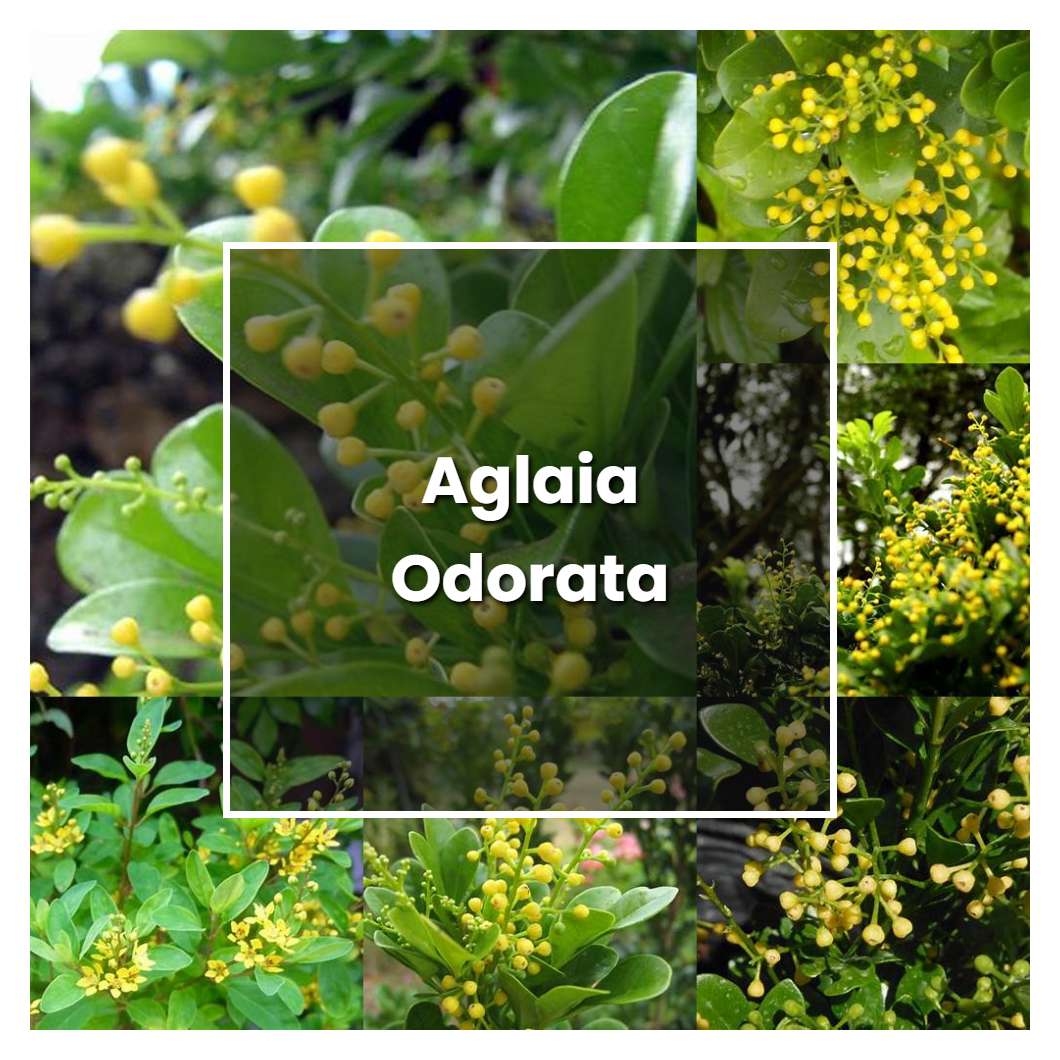Aglaia odorata is a plant that belongs to the family Meliaceae. It is native to China, and its scientific name is Aglaia odorata. This plant is also known as the Chinese perfume tree, and its flowers are used to make a type of perfume.

About soil condition, Aglaia Odorata prefers well-drained, sandy or loamy soils, and can also grow in nutritionally poor soils. It is also tolerant of drought, but not of waterlogging. The plant can also be found in rocky and limestone areas.
Just like other plants, the aglaia odorata needs sun to grow properly. It should be placed in an area with bright, indirect sunlight. If the plant doesn't get enough sun, it will become leggy and won't produce as many flowers.
The temperature conditions that are ideal for aglaia odorata are between 68 and 75 degrees Fahrenheit. This plant does not tolerate cold well and should be kept indoors or in a greenhouse if the temperature drops below 50 degrees Fahrenheit. Temperatures above 80 degrees Fahrenheit can also be harmful to this plant.
Ideal humidity condition for this plant is around 50% to 60%. The air around the plant should not be too dry nor too wet. If the humidity drops below 50%, the leaves will start to drop off. If the humidity rises above 60%, the leaves will start to yellow.
Mentioning fertilizer, this type of plant prefers to have a light hand when it comes to fertilizer. Aglaia odorata does best with a light application of fertilizer every two to four weeks during the growing season. It's important to avoid giving the plant too much fertilizer, as this can lead to root problems. When it comes to the roots, this plant prefers to have a well-draining soil.
Pruning is an important aspect of caring for your Aglaia odorata plant. Pruning helps to encourage new growth, and can also help to shape the plant. When pruning, be sure to remove any dead or damaged leaves or stems. You can prune your Aglaia odorata plant in the spring or summer.
Propagation of the aglaia odorata plant is typically done through stem cuttings taken from new growth. Cuttings should be taken from the tips of the stems, and each cutting should include several leaves. The cuttings should be placed in a container filled with moist potting mix, and then covered with a plastic bag to create a humid environment. Cuttings should be kept in a warm spot out of direct sunlight until new growth appears, at which point they can be transplanted into individual pots.
Usually, the plant growth rate studies have been conducted in humid tropical and subtropical regions of the world. The species is fast-growing in moist well-drained soils, and can attain a height of 30 m (100 ft) and a diameter of 100 cm (39 in) in as little as 15 years. Under optimum conditions, the tree can grow up to 45 cm (18 in) per year for the first 10 years of its life.
Common problems for this kind of plant are wilting and yellowing of leaves, brown spots on leaves, and dieback of stems. These problems are usually caused by insufficient watering, too much direct sunlight, or diseases. To prevent these problems, water the plant regularly and evenly, provide adequate drainage, and avoid over-exposing it to sunlight. If the plant is already affected by any of these problems, remove the affected parts and treat the plant with fungicide or insecticide according to the manufacturer's instructions.
Source:
Aglaia odorata var. microphyllina - calphotos.berkeley.edu
Sweet Woodruff, Galium odorata Wisconsin Horticulture
Staff View: Pengaruh ekstrak daun dan ranting Aglaia odorata
